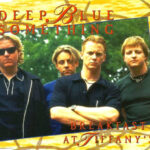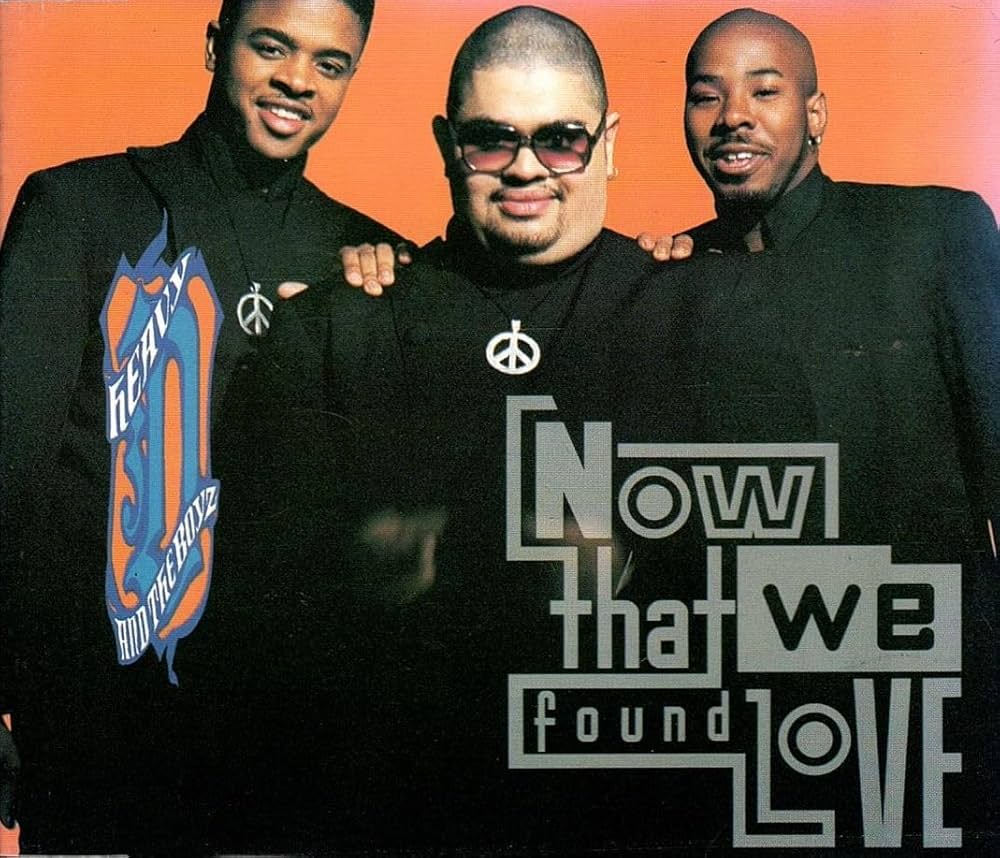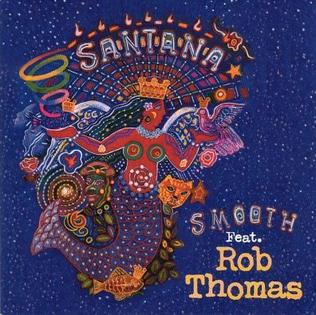 Pop music has a way of attaching itself to a moment in time, wrapping itself around an era like a photograph you can hear. In the mid-1990s, alternative rock was splintering into countless directions: grunge was beginning to fade, Britpop was invading American airwaves, and radio programmers were eager to fill playlists with anything that captured both melancholy and melody. Nestled right in the middle of that cultural and sonic crossroad came a song that shouldn’t have been as big as it was, yet became unavoidable for a period: “Breakfast at Tiffany’s” by Deep Blue Something. Released in 1995, this jangly, lovelorn anthem stood out not because it was sonically groundbreaking, but because it was immediately relatable, catchy, and gently quirky in its pop sensibilities.
Pop music has a way of attaching itself to a moment in time, wrapping itself around an era like a photograph you can hear. In the mid-1990s, alternative rock was splintering into countless directions: grunge was beginning to fade, Britpop was invading American airwaves, and radio programmers were eager to fill playlists with anything that captured both melancholy and melody. Nestled right in the middle of that cultural and sonic crossroad came a song that shouldn’t have been as big as it was, yet became unavoidable for a period: “Breakfast at Tiffany’s” by Deep Blue Something. Released in 1995, this jangly, lovelorn anthem stood out not because it was sonically groundbreaking, but because it was immediately relatable, catchy, and gently quirky in its pop sensibilities.
For many who grew up in the mid-’90s, the song has become a symbol of an era—one of those tracks that instantly triggers nostalgia for the sound of alternative radio, MTV buzz clips, and college-town coffee shops with acoustic guitars propped against every wall. But behind the lighthearted melody and the instantly recognizable title drop lies a song with a surprisingly sharp sense of narrative, as well as a fascinating legacy that has outlived the short-lived commercial peak of its creators.
The Origins of Deep Blue Something
Deep Blue Something wasn’t exactly positioned to become a household name in the 1990s. Formed in Denton, Texas by brothers Todd and Toby Pipes along with guitarist Clay Bergus and drummer John Kirtland, the band grew out of the University of North Texas music scene. They weren’t chasing trends so much as honing their craft in a thriving local scene where college radio, indie rock, and alternative pop all blurred together.
Their early work leaned toward the jangly and melodic side of alternative, not unlike contemporaries Gin Blossoms or Toad the Wet Sprocket. While the grunge era was dominated by angst and heavy distortion, Deep Blue Something gravitated toward layered harmonies and acoustic-driven arrangements. This gave their music a lighter, more accessible quality—something that would prove critical when they finally broke through with “Breakfast at Tiffany’s.”
The Song’s Inspiration
Despite what some listeners assume, the band wasn’t particularly inspired by Audrey Hepburn films in general or Breakfast at Tiffany’s specifically. In fact, the reference was originally a placeholder. Todd Pipes has explained that the song originally referenced the 1961 film Roman Holiday, but the phrasing didn’t quite work in the chorus. Swapping it out for Breakfast at Tiffany’s not only made the syllables click but also lent the song a cultural hook that listeners could latch onto instantly.
The brilliance of this change can’t be overstated. Breakfast at Tiffany’s wasn’t just a movie—it was shorthand for romance, wistfulness, and timeless cinematic charm. Even if you had never seen the film, the title alone evoked something classy, melancholic, and iconic. This cultural weight is what allowed the song’s chorus—“And I said, what about Breakfast at Tiffany’s? / She said, I think I remember the film / And as I recall, I think we both kinda liked it”—to land with such universal resonance.
It wasn’t about the movie at all; it was about clinging to any shared memory as a way to salvage a crumbling relationship. That tiny act of nostalgia—finding a single moment of connection in a relationship otherwise falling apart—is what made the song feel so painfully relatable to anyone who’s ever sat across from a partner and realized things were ending.
Anatomy of a ’90s Hit
Musically, “Breakfast at Tiffany’s” isn’t complicated. Built around acoustic strumming, a bright guitar riff, and an upbeat rhythm section, the song sits firmly in the radio-friendly alternative rock of the mid-1990s. The vocal delivery, however, gives it its edge. Todd Pipes’ slightly nasal, earnest voice pushes the song forward with both urgency and vulnerability, as if he’s pleading for the relationship even while knowing it’s doomed.
The song’s structure is clean and classic: verse, pre-chorus, chorus—repeat. What makes it shine is the way the chorus bursts into something instantly anthemic, transforming the personal story of a fractured relationship into something communal. It’s the kind of chorus that makes strangers sing along together, as they did at college bars, open-mic nights, and, eventually, massive radio festivals in the mid-’90s.
At a time when alt-rock flirted with darkness and irony, “Breakfast at Tiffany’s” stood out as refreshingly sincere. There was no pretense, no grunge nihilism, no Britpop swagger. Just a guy clinging to one last thread of hope in a failing romance.
Chart Success and MTV Saturation
Released in 1995 on the album Home, the song quickly gained traction in Europe before breaking through in the United States. By early 1996, “Breakfast at Tiffany’s” had climbed to No. 5 on the Billboard Hot 100 and reached No. 1 on the UK Singles Chart. MTV played the video heavily, ensuring that the band’s casual, slightly scruffy image was broadcast to millions of viewers.
The video itself is quintessential ’90s minimalism: the band playing in what looks like an abandoned warehouse, intercut with shots of rain, old movie projectors, and flickering lights. It wasn’t flashy, but it didn’t need to be. The song’s power was in its hook, and the video simply gave it a visual frame.
For Deep Blue Something, this was both the dream and the curse. Few bands get to taste chart-topping success. But the shadow of “Breakfast at Tiffany’s” would loom so large that the band could never quite escape its gravitational pull.
A One-Hit Wonder?
The label “one-hit wonder” is often thrown around too casually, but in this case, it sticks. Deep Blue Something released other albums, including Byzantium in 1998 and Deep Blue Something in 2001, but none produced anything close to the impact of their signature single.
Yet being a one-hit wonder isn’t necessarily a failure. In fact, it’s a strange kind of immortality. Plenty of bands toil for decades without writing a song that breaks through in such a massive, enduring way. For Deep Blue Something, “Breakfast at Tiffany’s” guaranteed them a permanent place in the ’90s pop culture archive, even if the rest of their discography remains underappreciated by casual listeners.
Why the Song Endures
Nearly three decades later, the song still resonates. It pops up regularly in nostalgia playlists, alternative rock retrospectives, and even karaoke nights. Part of this endurance comes from its simplicity: a straightforward, catchy song about a relatable emotional moment. But part of it also comes from the cultural recognition of its title.
Breakfast at Tiffany’s the movie remains a fixture in American pop culture, from dorm room posters to fashion magazine spreads to homages in other films and TV shows. The song piggybacks on that timeless iconography, keeping itself relevant even as musical styles change.
There’s also the fact that the song feels oddly timeless within its ’90s framework. While other hits from the era sound deeply tied to grunge distortion, industrial textures, or trip-hop atmospherics, “Breakfast at Tiffany’s” could almost be dropped into a playlist today without sounding too out of place. Its jangly guitar pop shares DNA with both earlier college rock and later indie revival bands, making it a bridge across eras.
A Cultural Touchstone for Relationships
More than anything, the song has endured because of its central idea: trying desperately to find one point of connection to hold on to. Listeners of all ages and backgrounds can identify with that situation, whether it’s clinging to a shared favorite movie, a song, a trip, or even just a memory. It’s the human instinct to find common ground even when everything else is slipping away.
This is why the song so often gets referenced in break-up playlists or sung with ironic smiles at karaoke. It’s not just catchy—it’s cathartic. It reminds us of those bittersweet moments when love was ending, but we still wanted to believe one thing might save it.
Legacy of the Song and the Band
For Deep Blue Something, life after “Breakfast at Tiffany’s” has been quieter, but not inactive. The band members pursued side projects, production work, and occasional reunions. They’ve continued to play shows, often leaning into the nostalgia of their one big hit, but also using it as a springboard to remind audiences that they were more than just that one track.
And yet, the song’s legacy towers above everything else. It’s become one of those ’90s tracks that instantly paints a picture of the decade—alongside songs like Blind Melon’s “No Rain” or Semisonic’s “Closing Time.” These were not necessarily the most artistically groundbreaking songs of their time, but they were the ones that everyone remembered, the ones that kept playing on car radios and MTV countdowns.
Conclusion: The Power of Shared Memories
At its heart, “Breakfast at Tiffany’s” is about memory, connection, and the fragile threads that tie us together. Deep Blue Something may not have built a career stacked with hits, but they captured a universal feeling in a single, unforgettable chorus.
The song reminds us that sometimes pop music doesn’t need to reinvent the wheel—it just needs to speak directly to the human condition. And for anyone who lived through the mid-1990s, hearing those jangly guitars and that plaintive chorus instantly pulls you back to a time when alternative pop was everywhere, MTV still ruled the airwaves, and even a scrappy band from Texas could write a song that became part of the cultural fabric.
For Deep Blue Something, one hit was enough. For the rest of us, “Breakfast at Tiffany’s” remains a reminder that even in endings, there’s something worth remembering.


